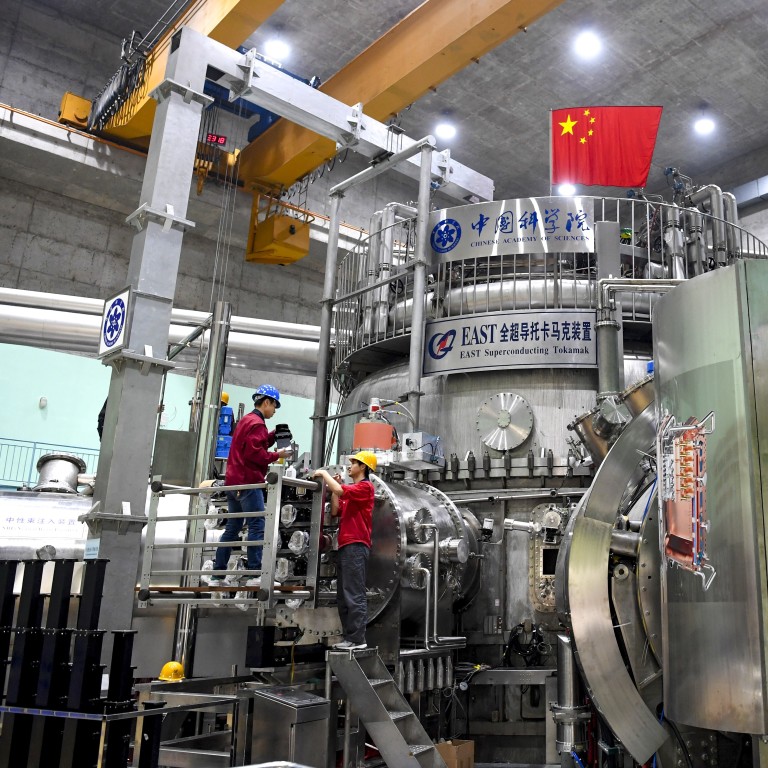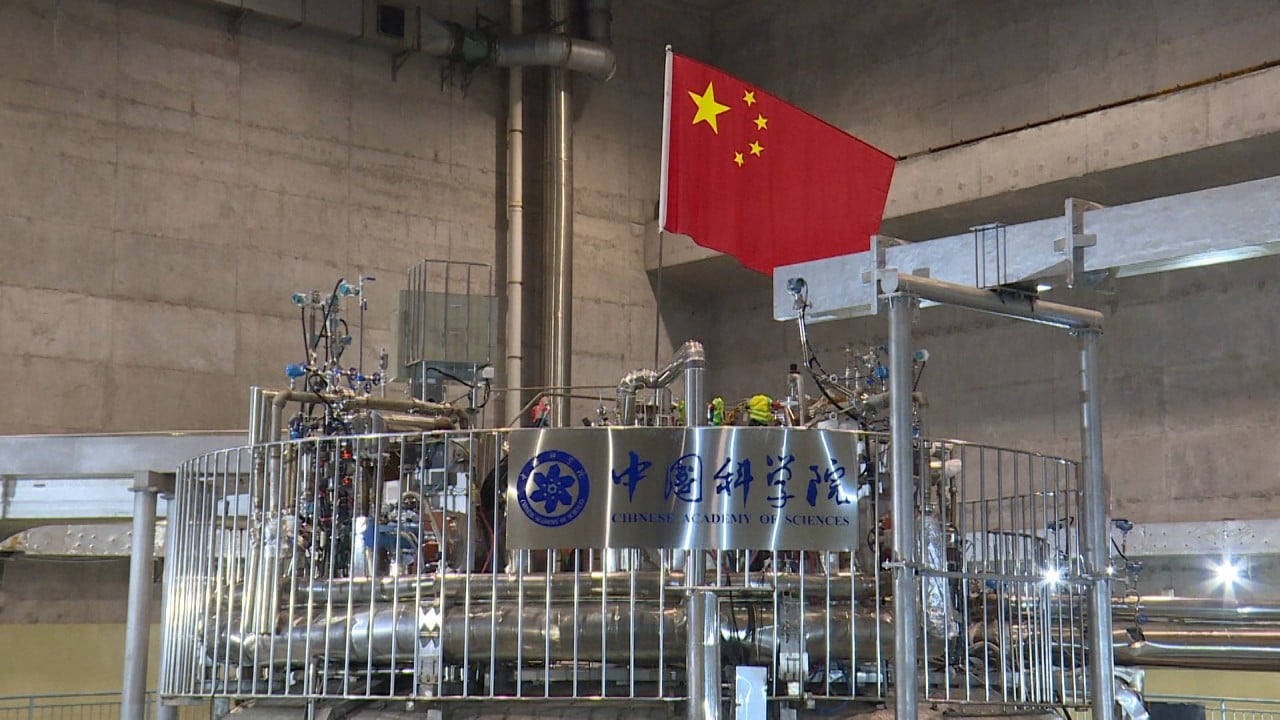
Chinese ‘artificial sun’ hits new mark in fusion energy mission
- Facility in country’s east maintains extreme temperatures for five times longer than its previous benchmark
- Similar endeavours are under way in the United States, Europe, Russia, South Korea
China has reached another milestone in its quest for a fusion reactor, with one of its “artificial suns” sustaining extreme temperatures for several times longer that its previous benchmark, according to state media.
It also maintained a temperature of 160 million degrees Celsius for 20 seconds, the report said.
Last year, EAST achieved a plasma temperature of 100 million degrees Celsius for 20 seconds.
Friday’s experiment means Chinese scientists have sustained the extreme high temperature for five times longer.
The facilities are part of China’s quest for fusion reactors, which hold out hope of unlimited clean energy. But there are many challenges to overcome in what has already been a decades-long quest for the world’s scientists.
Similar endeavours are under way in the United States, Europe, Russia, South Korea. China is also among 35 countries involved in the International Thermonuclear Experimental Reactor (ITER) megaproject in France.
Direct comparison of the experiments in different countries is difficult as the devices are designed differently.

01:03
Chinese scientists experiment with gaining limitless clean energy through fusion reactions
The facilities are called “artificial suns” because they aim to replicate the nuclear fusion reactions that power the sun, which has a temperature of 15 million degrees Celsius.
When two atoms fuse, they release an enormous amount of energy.
To do so on Earth, scientists will need to achieve both extreme high temperatures for long periods.
Despite the progress made, fusion reactors are still a long way from reality.
Song Yuntao, director of the Institute of Plasma Physics of the Chinese Academy of Sciences, said the latest results were a major achievement for physics and engineering in China.
“The experiment’s success lays the foundation for China to build its own nuclear fusion energy station,” Song was quoted as saying.
China turns on its ‘artificial sun’ in quest for nuclear fusion energy
China joined the ITER project in 2003 and it was reported at the time as an opportunity for the country’s scientists to expand their expertise and give China a voice in the international science community.
The project in southern France has been delayed many times and the latest goal is to generate plasma in 2025.
The European Union pledged US$6.8 billion in new funding in February. China National Nuclear Corporation will install ITER’s core equipment.
Chinese scientists have previously been quoted as saying that they hoped China’s own experiments, though smaller, could help provide more information to ITER.

